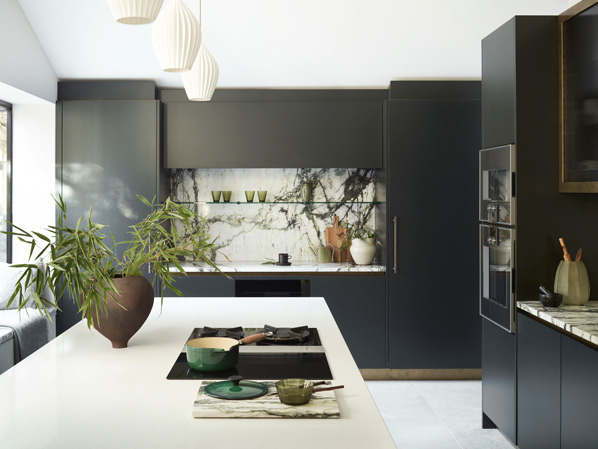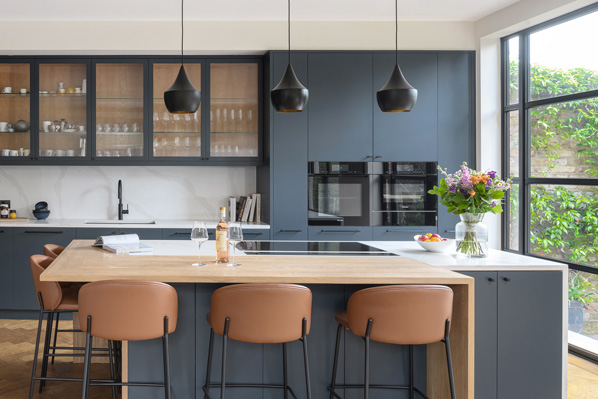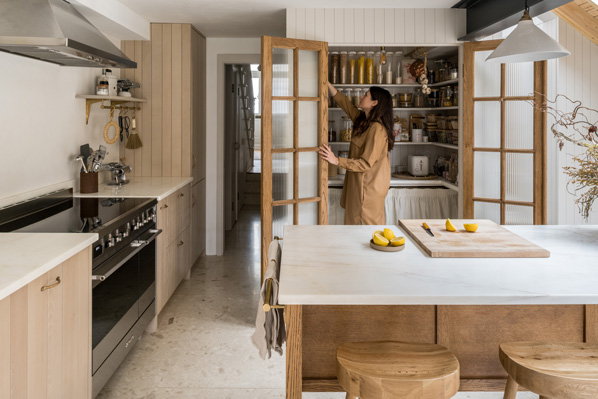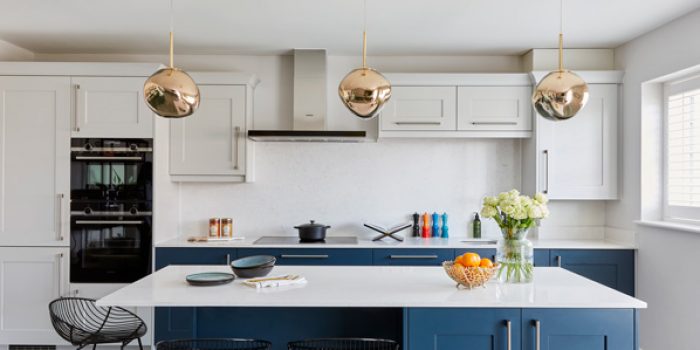When looking to transform your home, one of the first things that comes to mind is the kitchen – after all, it’s the hardest-working room in the house.
And with sustainability high on the agenda, chances are eco-friendly choices are right up there.
Indeed, according to the latest kitchen trends survey by home renovation and design platform, Houzz, it’s overwhelmingly a priority for homeowners, with the vast majority incorporating sustainable features during their renovation (93%).
Interestingly, the majority do so because of the long-term cost-effectiveness (75%). So how do you tackle your kitchen renovation in the most sustainable way?
By Sam Wylie-Harris, PA

Why it’s important
“A kitchen renovation is often a big project,” says Amanda Pollard, senior editor, Houzz. “It’s likely to create significant amounts of waste and will involve choosing numerous different materials and elements, which will all have an impact on the environment.”
The kitchen industry consumes a lot of virgin raw materials to produce all of the different elements, such as wood products for cabinetry, metals for appliances and stone for worktops, explains Mark Byers, director of Oliver Green Kitchens.
“Fortunately, the industry has reacted to the high demand for raw materials by embracing recycling,” says Byers. “But consumers also have a part to play by making good material choices when replacing or updating their kitchen.”
As Felicity White, director of Felicity White Interiors, points out: “Kitchen renovations are typically the most expensive area of the home to renovate, so creating a kitchen that’s going to stand the test of time is also important financially.”

The main things to think about
“There are three things to consider when choosing materials,” highlights Byers. “The first is whether it contains any recycled content, the second is its durability and the third is its end-of-life.”
Manufacturers play a big part in producing items that incorporate recycled elements, but we as consumers should be asking the question of how much, if any, recycled material is used in a product, advises Byers.
Secondly, considering the items’ durability means not buying products just based on price. “The cheapest products will often end up costing more over time because they simply don’t last,” says Byers.
“Sadly, the cheapest products are also the least likely to incorporate any recycled material and often cannot be easily recycled themselves,” notes Byers. “So being able to recycle, refurbish or repurpose products when you’re done with them is an important final consideration,” he adds.
One of the first questions we ask our clients is whether they can keep any elements of their old kitchen, says White. “Sometimes the cabinet carcasses are well-constructed and it’s a case of replacing the cabinet fronts and handles, or even wrapping the cabinet fronts to save throwing them away.”
However, if you’re planning a complete overhaul, and the existing kitchen is in good enough condition, she says it may also be possible to sell it through second-hand kitchen vendors, such as Rehome.”

What materials are best?
White says to aim for natural materials. “For cabinets and door fronts, FSC timber and plywood are better options than particle board or MDF options you typically find with large kitchen retailers.”
“With the right construction and treatment, natural wood can last longer as it’s stronger and can be repaired, whereas engineered wood can’t. Engineered wood can also contain high levels of formaldehyde, which can be nasty if it gets into the air, she adds.”
One material to use less of, or not at all, is MDF, warns Byers. “As it’s difficult to recycle, most MDF products at the end of their life are used for fuel, which releases carbon and other [unpleasant] chemicals into the atmosphere.”
“Laminate worktops are also not great,” he notes. “Not surprisingly, both these products are heavily used in the kitchen industry because they’re cheap. As a broad guide, the best products to use are those that can be recycled and used in new products or can be refurbished or repurposed.”
When choosing materials for your new kitchen, experts on Houzz advise researching where the item is coming from, how it has been made and what is in it, says Pollard. “It’s also best to source items as locally as possible and keep chemicals to a minimum.”







